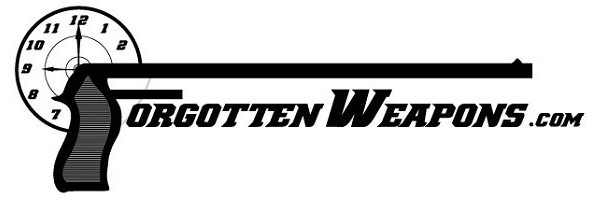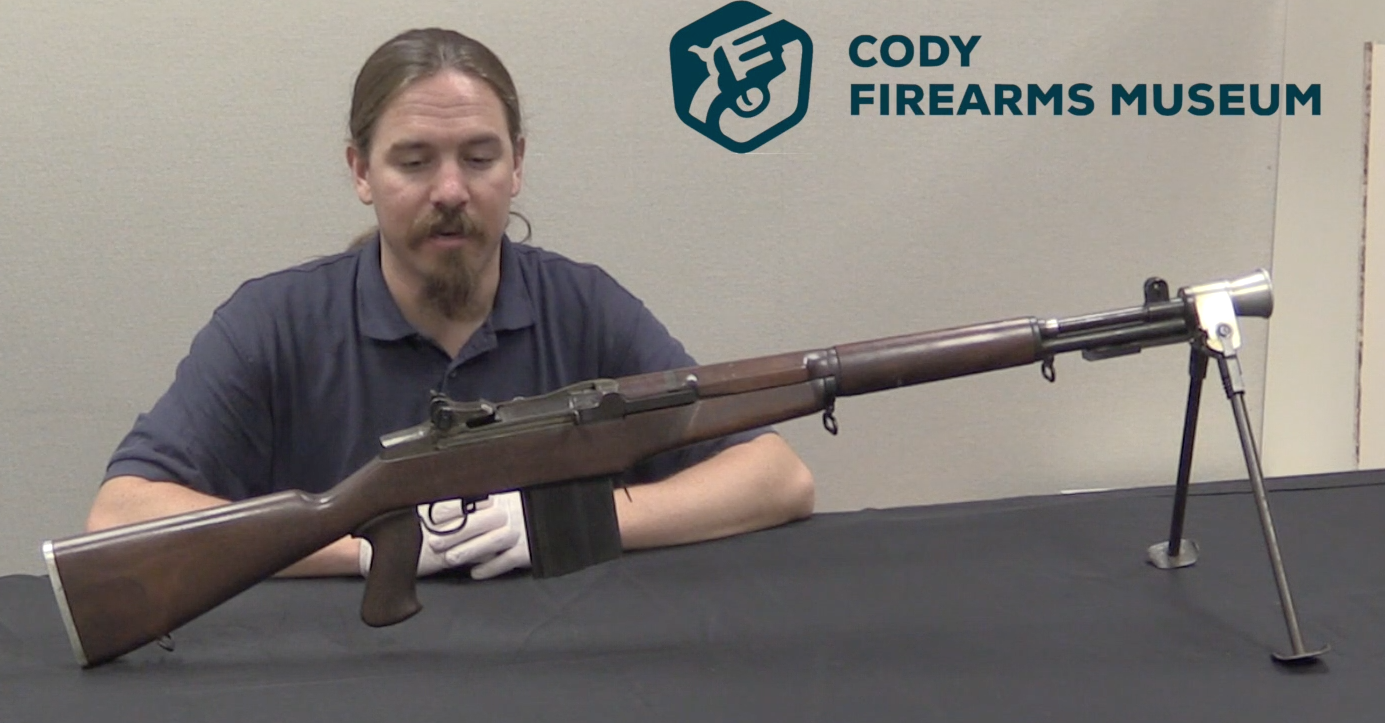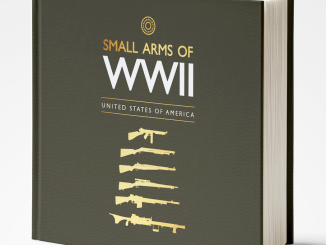As the main national armory, Springfield got a number of requests to make specialty rifles for commissioned officers and important dignitaries each year. These were essentially all custom sporting rifles, and the orders were duly filled. In 1875, however, the decision was made to standardize a formal pattern of Officer’s rifle – the Model 1875. This was mechanically a standard Trapdoor Springfield, but made to a very high standard of fit and finish. They were given very nice wood for stocks, and the metal elements were engraved. A 26″ barrel was used, with aftermarket Beach two-position front sight and aperture tang rear sight. Each rifle had a single set trigger, and a detachable pistol grip was added in 1877.
These rifles were made in batches and were available to commissioned officers for $36 (reduced to $27 in 1879). A total of 477 were made between 1875 and 1885, with the last recorded sale taking place in 1900. These are without a doubt the finest Trapdoor Springfields made, and a real treat to handle.




I remember seeing an Officr’s Model Trapdoor Springfield at the West Point Museum in the late 1950s.It was beautiful weapon. I wonder if it’s still there.
While these are, in reality, just a sporterized Springfield Trapdoor, these are truly a delight to handle. You see the H&R repros periodically, but a period arm with similar handling is tough to find. Imagine an Officer’s Model M-4.
My nephews wife owned an Officers model, but the pistol grip was metal. Was that an option?
I don’t know that the iron pistol grips were OEM for the Officer’s Model, but they added some great handling to that straight wrist. Because the original Officer’s Model stock was just a plain, straight wrist, I’d imagine they were added.
Sorry for raining on the parade, but isn’t the officers job to lead his men to kill as many enemies as possible, not to waste his time taking part in shooting himself?
The Prussian army, for example, at that time only knew sabres as officer armament. Even sergeants had a much smaller allotment of cartridges compared to ordinary men, because shooting was not considered their main task.
The thread already said these were sporterized. The sort of thing gentlemen hunted or shot targetshunany.In any event line grade officers would have need for a rifle in a fight. I recall Lt. CCharLswapped his resolved for a long arm at Rorke’s Drift
That is the officer’s job. He’s not there to fight, but to manage. Things don’t always go well, though, and if given the choice of personally drilling Quanah Parker with a classy gat and maintaining my gentlemanliness, the prudent choice is always to go home that day.
Sorry to rain on your parade, but:
The officers model rifle was mainly intended as an officer’s perquisite to be used for recreational shooting and hunting. Although there are instances of officers using shoulder arms during the Indian Wars.
While I never served with the Prussian Army, I served 20 years in the U.S. Army as an Infantryman, PMOS: 11 Bravo to include almost 18 months in Vietnam. Company grade officers carried M16s and both officers and NCOs carried a full load of M16 ammunition.
I’d suggest there was a big difference in those officers who’d seen Civil War service and those who saw mainly polo field service. These rifles killed far more antelope than they did Indians, but I’d damn sure want one handy if I were detailed to the Llano Estacado. Know what I mean?
I disagree!
The officers model rifle was mainly intended as an officer’s perquisite to be used for recreational shooting and hunting. Although there are instances of officers using shoulder arms during the Indian Wars.
While I never served with the Prussian Army, I served 20 years in the U.S. Army as an Infantryman, PMOS: 11 Bravo to include almost 18 months in Vietnam. Company grade officers carried M16s and both officers and NCOs carried a full load of M16 ammunition.
Please disregard the duplicate response. I an old grunt and no computer whiz. My first response is my intended response.
$36 back in the days when a dollar was defined as 1/20th of an ounce of gold
what has the dollar fallen to now? $3,200 to an ounce of gold?
so in terms of today’s un-backed
Zimbabwedollars, its price would be pushing $5kAs USD does no longer follow gold direct comparison might give wrong result.
Less error-prone way is to compare to pay.
According to https://www.navycs.com/charts/1870-navy-pay-chart.html in 1870s lowest Commissioned was Ensign who was paid depending at mode of operation and experience (years elapsed since he became Ensign) following way
mode, experience, pay monthly
Sea Duty, exp <5 years, 100.00
Shore Duty, exp <5 years, 83.33
On Leave or Waiting Orders, exp 5 years, 116.67
Shore Duty, exp >5 years, 100.00
On Leave or Waiting Orders, exp >5 years, 83.33
This give average of around 91.67
According to https://www.navycs.com/charts/2024-military-pay-chart.html as of 2024 lowest Commissioned is now O-1 and depend at Years of Service
experience, pay monthly
2 years, 3983
>3 years, 4815
>4 years, 4815
>6 years, 4815
This gives average of 4450.80
So considering averages, 2024 lowest Commissioned does get ~48.55 times of $ whilst compared to 1870s lowest Commissioned. Therefore $36 back then would be like 1747.80 in 2024.
I would only add that at the Greasy Grass (Little Big Horn), Major Reno used his preferred weapon, a model 1868 Allin-conversion rifle in .50-70, for its greater range and better accuracy compared to the 1873-model .45-70 carbine. (Actually a using a .45-55 cartridge.)
Also, even today any infantry officer with an ounce of sense carries a rifle just like the enlisted men. It makes him less of a standout target for enemy snipers.
The old traditional “Sam Browne”-style pistol belt with the over-the-shoulder strap to support the weight of the sidearm was always called the “Shoot Me Strap” by Army and Marine snipers. It immediately identified the officer in any group.
clear ether
eon
Before the Russo-Japanese War, considerations of mass uniformity had to be calculated differently.
On the one hand, blend into the ranks, reduce chances of being identified and singled out for death. On the other, doing so reduced your effectiveness as a command node: Your own troops couldn’t easily distinguish who you were or whether you were worth listening to. If you looked just like “another ranker”, and you were trying to stem the tide of a rout in the ranks of a unit where the men were not personally familiar with you, well… Yeah. Kinda a problem.
All of this crap has to be evaluated through the lens of the times, not from our perspective. To us, the old uniforms look ridiculously gaudy and totally nuts; at the time, there was good damn reason to be running around decked out in full scarlet battle order, wearing a bearskin busby.
The calculations have to be done in the math of the times, not that of ours. Our calculus is predicated on totally different battlefield conditions, totally different combat imperatives. An officer of today, transposed to an early 19th Century battlefield would be rightly seen by men and other officers of the time as an outright poltroon, seeking a nondescript safety in the ranks while abandoning his duties as a center of/for order and morale…